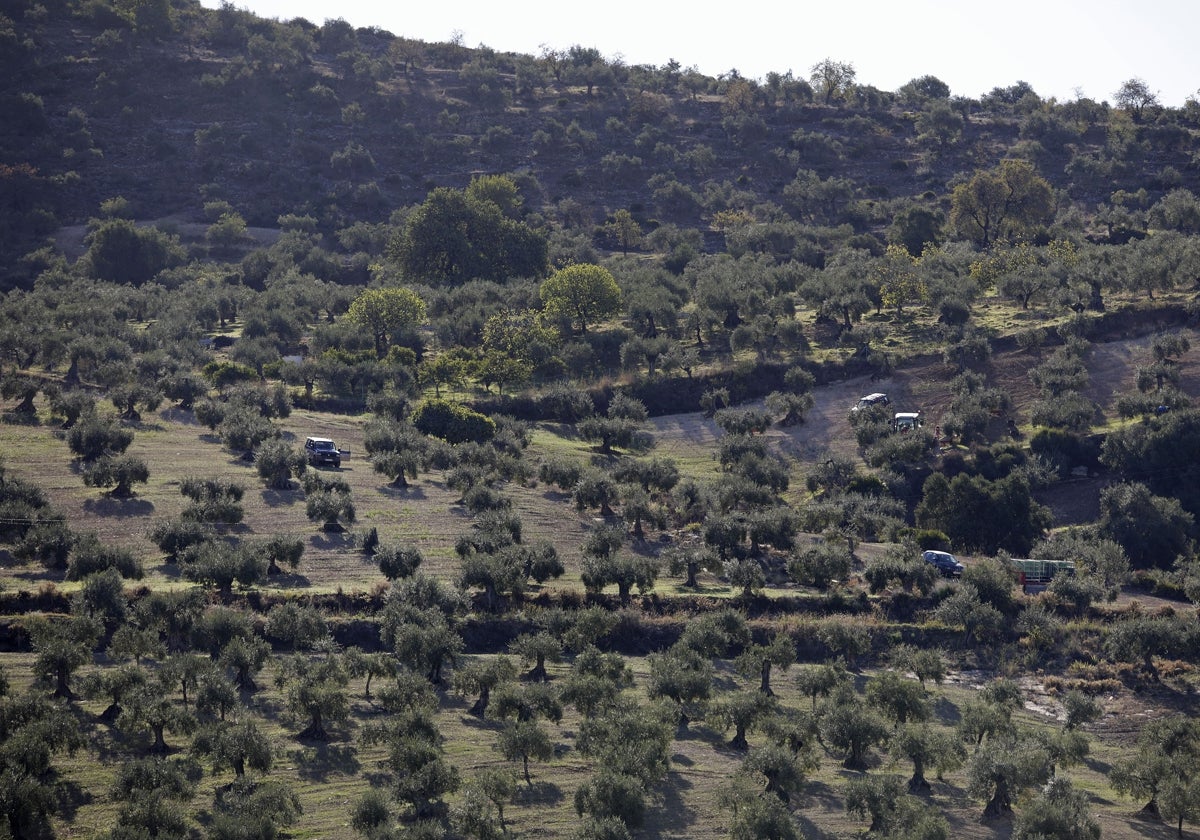Malaga's unseasonally warm winter and traffic pollution are making allergy season start early
The pollen count from certain trees and flowering plants like cypress, banana and nettles are, or will be, at a high level in the coming days, and it looks like the olive groves will be flowering earlier this year
It is a uniformly accelerated progression. It is also a fact that can be seen by measuring the air quality and intensity of the classic symptoms for allergies, which vary in severity from rhinitis (runny nose and inflammation), conjunctivitis (streaming, sore eyes), itching, redness or more serious respiratory problems such as asthma.
Allergies are becoming less predictable and more varied. The seasons come around earlier too. They are complicated by factors such as traffic pollution and cross-reactivity (where an immune response to one pathogen can interfere with, or lower, the immune response to another pathogen). So say doctors and biologists, each in their own field.
So, keep your eyes peeled as it has not yet reached Andalucía. The first pollens of another problem plant have been detected in Catalonia and it is a very allergenic species, causing havoc in Eastern Europe. It is ragweed, easily confused with other species and for which the Andalusian branch of Spain's Aerobiology Network (REA) has set up a special surveillance and issued instructions on when to press the alarm call.
Surveillance
The University of Malaga (UMA) is a member of this network and Dr Antonio Picornell works in UMA's botany and plant biology department. He talks to SUR on the specific issues happening right now with cypress trees and the urticaceae family of flowering plants, of which the common nettle is a member.
Both types of pollen are very high at the moment in Malaga: "These are normal levels for this time of year, what is true is that this year the flowering is happening sooner, still within normal limits, but this [warmth] is causing the first holm oaks to flower, and today I have already seen an olive tree in flower...", says Picornell, who assures us that this flowering ahead of the norm amounts to approximately a fortnight earlier than usual.
The scientist places this phenomenon within the boundary setting of 'normal', but it is still one of the earliest years for such blooming. "This is due to a winter that was a little warmer than others," he states.
Nettle and cypress
"There are high levels of parietaria, urticaceae, which are potentially allergenic. These levels are the same as last year. They are the same pollen grains per cubic metre: 48. The rest of the levels are moderate in some pollen types such as cupressaceae. It is nothing alarming," he says, while indicating that next week the tendency is for both pollens to rise. In the case of the cypress, expect that to continue rising because these trees have only just started to flower. REA's map is dotted in red for both cases.
Another forecast made by the UMA is that the onset of olive tree pollens filling the air is upon us. "It is likely that it could happen in the next couple of weeks. But the olive tree, in my experience, changes its flowering a lot. It can vary a month up or down from year to year. This looks like it is going to be one of the early years. Maybe already in March we will have concentrations that can cause allergies. Last year, April-May was the time with the highest levels."
Unpredictable and variable
Dr Ibón Eguiluz Gracia heads up the committee on respiratory allergy and immunotherapy for Alergosur (a non-profit society in Andalucía of scientific and medical specialists in allergology and clinical immunology). "For many years we have been identifying respiratory allergies and the trend is increasingly serious, more concentrated. The great variability is striking. Previously, allergies were more predictable and pollen was more stable from one year to the next," he explains.
Dr Eguiluz lists conditioning factors that worsen the issue: traffic and cross-reactivities: "In Malaga, it is clear that pollution is due to traffic, there is not much industry. The overcrowding of the city is beginning to be noticed. It affects pollens and patients. Pollution irritates the mucous membranes and makes them react worse to pollen, which worsens rhinitis or asthma, making pollen more allergenic."
Climate change
Furthermore, obviously, global warming or climate change has a direct impact on the evolution of allergies. There are invasive species that, with climate change, can induce allergies or cross-reactivity. "For the last decade we have been seeing that the allergy season arrives earlier," says Dr Eguiluz.
At this point, he points out that the main allergen in Malaga used to be dust mites. Now it is the olive tree: "It has a growing influence. It used to start in May, they said it was from San Isidro [a saint's day celebrated on 15 May]. Now it is showing up from April and lasts until July."
Prognosis over the coming days
These forecasts given by the doctor are already being brought further forward. Olive trees are already flowering in isolated pockets. For the time being olive tree pollen will be at very low levels, bananas will be yellow or red, mainly around Malaga city and some parts of Axarquia, and the quercus (holm oak) will be low or very low at the green level, as will all the amaranthaceae (a large family of flowering weeds), plantago (another family of flowering weeds, often known as plantains or fleaworts), grasses, the urtica membranacea (large-leaved nettle), alder, casuarina (also known as the she-oak or Australian pine), hazel, birch and ash.

